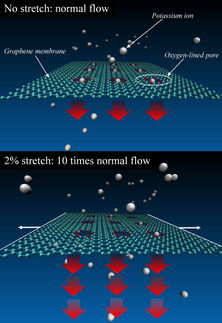A hybrid material to spot organic contaminants in the atmosphere
The development of hybrid materials is an emerging field in materials science. As the researcher explained, the interest in these materials stems from "the success in combining that stability of inorganic components with the versatility of organic components. Blending them causes the properties of both to be combined and even improved," she pointed out. "What is more, hybrid materials can be processed in the form of gels, films, fibres, particles or powders. There is virtually no limit on the combinations of organic and inorganic components to produce hybrid materials, which have a huge number of applications in medicine, microelectronics, sensors, optical systems, the automotive industry and decorative surface coatings.
Paula Moriones resorted to a process (known as sol-gel) that allows hybrid materials to be synthesised; this results in porous materials with properties controlled at ambient temperature, and leads to savings with respect to other processes. The synthesis of these hybrid materials has resulted in a xerogel, a gel in a dehydrated state without any liquid inside it.
Nanometric-sized pores
As the researcher confirmed, gel formation time and the properties of the materials obtained are influenced by the conditions for synthesising these materials and the proportion of the ones that are organic. So, for example, the materials can have smaller or not so small pores, although always in nanometric sizes. "Pore size is crucial in the applications of these materials, because they can, for example, be used for the controlled release of drugs," she pointed out.
The research by Paula Moriones, which included a stay at the University of Lisbon (Portugal), also yielded other results. "Some of the synthesised materials are highly hydrophobic and repel water. This property enables them to be used in the pharmaceutical industry as elements for selectively trapping other materials on their surfaces or retaining them, and in the glass industry as protective coatings," concluded the researcher.
Topics
Organizations
Other news from the department science

Get the analytics and lab tech industry in your inbox
By submitting this form you agree that LUMITOS AG will send you the newsletter(s) selected above by email. Your data will not be passed on to third parties. Your data will be stored and processed in accordance with our data protection regulations. LUMITOS may contact you by email for the purpose of advertising or market and opinion surveys. You can revoke your consent at any time without giving reasons to LUMITOS AG, Ernst-Augustin-Str. 2, 12489 Berlin, Germany or by e-mail at revoke@lumitos.com with effect for the future. In addition, each email contains a link to unsubscribe from the corresponding newsletter.























































